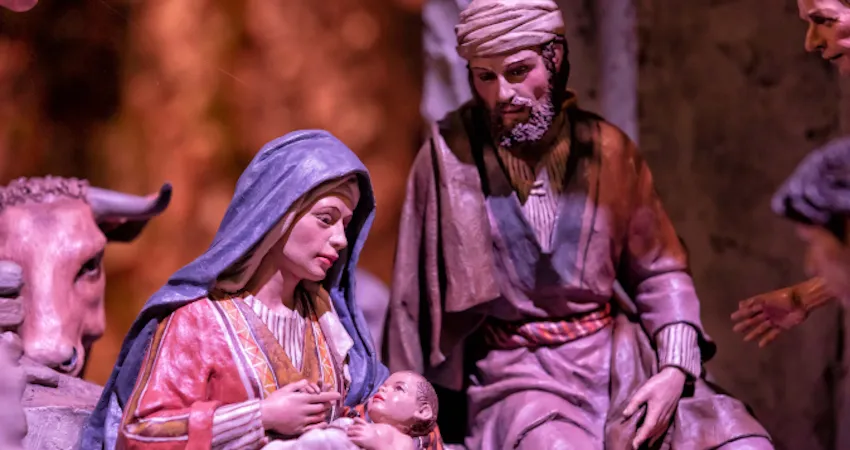Nativity Scene

From 24 November to 4 January, from 10:30am to 7pm
24 and 31 December and 5 January: from 10:30am to 1pm
Closed every Monday, 25 December and 1 January
Entry every 30 minutes, subject to capacity limits
Free admission: please obtain your tickets in advance at the ticket office or book online (€0.50 booking fee)
Maximum of 4 tickets per person
Audio description
Magnetic loop
Sign language
Reduced mobility
Scenic tour
Amplified sound
Iconos de accesibilidad proporcionados por Teatro Accesible
The Madrid City Hall Nativity Scene pays homage to what St. Francis of Assisi did in Greccio, Italy, on 25 December 1223: “For I would make memorial of that Child who was born in Bethlehem, and in some sort behold with bodily eyes His infant hardships; how He lay in a manger on the hay, with the ox and the ass standing by”, in the words of the friar and chronicler, Thomas of Celano.
In this year of 2023 - the first year in which the Ministry of Culture and Sport has declared Nativity Scenes to be a Representative Manifestation of Spain's Intangible Cultural Heritage - the City Hall Nativity Scene will commemorate the eighth centenary of the beginning of this tradition. It is located in the Operations Hall of CentroCentro, in a circular setting that allows visitors an excellent view of the entire tableau. It features two hundred Hebrew-style figures - in keeping with the customs and costumes of the time of Jesus - and twenty constructions and plant elements, all original works by the master nativity scene maker José Luis Mayo.
The design, scenography and landscape composition is by the Association of Nativity Scene Makers of Madrid and represent a sequence of six historical scenes: the Annunciation to the Virgin; the search for an inn in Bethlehem; the Nativity; the Annunciation to the shepherds; the Journey of the Magi and the Flight to Egypt, including, for the first time, the sea. The tableau also retains the river and popular scenes such as the mill and its miller, household chores such as cleaning and caring for the animals, and traditional trades such as those of the carpenter, the blacksmith, and the carter.







